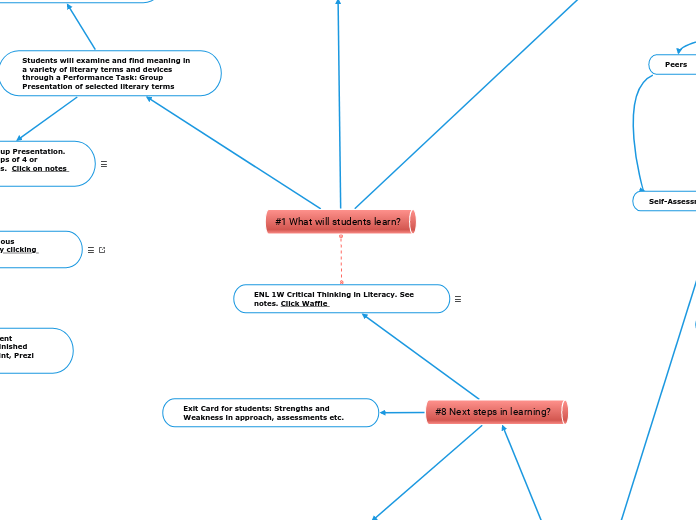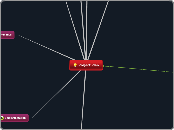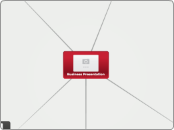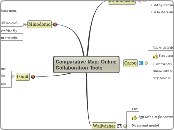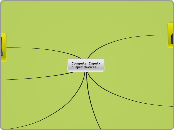Ongoing, timely feedback. Reader-based feedback. See waffle for explanation
I will have a lot of time to conference with the students, as there are responding to questions on poems/songs or researching for their Performance Task. While this is occurring I can provide ongoing verbal feedback. Stagg Peterson (2010) argues that verbal and written feedback can be a “powerful teaching tool if it is given while students are in the process of writing drafts” (p. 1). Although my students are not writing a draft for an essay, they still are crafting their passages for the Performance Task. I can provide feedback about “timely information, ” - how literary terms enhance meaning. This is an 'immediate need' for students as they are crafting their passages.
Stagg Peterson, S. (2010). Improving student writing using feedback as a teaching tool. What works? Research in Practice, 29. Queen’s Printer for Ontario. http://www. edu.gov.on.ca/eng/literacynumeracy/inspire/research/WW_Improving_Student_Writing.pdf
Peer-to-peer conferences
Discussion of Q & A on poems and songs.
Read and Respond to Literary-Term-themed Questions to poems and songs.
Use of exemplars. See waffle for explanation.
Criterion-based feedback will occur as the teacher will review the
Completion of Student Checklists/Journals. See explanation in #4. Teachers will monitor the completion of these tasks with routine checks.
Ongoing feedback and Conferencing from teacher. See waffle for explanation.
Students will receive constant feedback from the teacher and their classmates. The teacher will collect and provide evidence of learning by reviewing students notebooks with their written responses to poems/songs and their journals.
Students will read (teacher chosen) poems/listen to songs and locate literary devices by answering orally/written responses. Teacher will provide material and model. Teacher will review answers to questions throughout unit.
Timely Feedback from teacher
Observation Logs
Reflective Journal on Performance Task. Likes Dislikes of teacher's approach. group work etc.
Exit Card for students: Strengths and Weakness in approach, assessments etc.
Visual: Performance Task - Google Slide or PowerPoint
#8 Next steps in learning?
Test: Read Poem and respond to similar questions from previous poems and songs
Debrief - conference with teacher after rubric is returned
Rubric for Performance Task: Group Presentation
#7 How will students receive summative feedback
Peers
Self-Assessment - Journals + GRASP
Teacher
Written - Quiz
Oral - conferences with teacher and peers
Journals
Literary Terms Quiz
G.R.A.S.P.S - students complete worksheet to understand expectations of the Performance Task
Oral and Written responses to Q & A
Learn how to identify Literary Terms and how they are used to enhance writing in variety of poems and songs
Students will bring in their own songs/poems and and complete same activity from before with their group. *Students should take ownership of their own learning and bring in the own material. See waffle for reference.
Students should demonstrate some real-life connections or an application link to the "enduring understandings" (Wiggins and McTighe, 1998) of the performance task. When students bring in their own songs that use Literary Terms they are not only getting instant feedback themselves; they are also taking ownership of their own learning.
Wiggins, G. & McTighe, J. (2005). Understanding by Design, 2nd Ed. Alexandria, VA: Association for Supervision and Curriculum Development.
#4 What activities will enable students to learn?
Review Student Journals
#3 How will we collect and provide evidence of learning?
#2 How do we know learning has occurred?
Group work: researching definitions of literary terms with group members. Form passages for Performance Task.
Teacher will display exemplars of past presentations (different literary terms than the ones provided to the class)
Observational Log - classroom participation
Review notes from conferences
Review written responses to poems/songs
Peer to peer conferences. A week after project was assigned peer-to-peer conferencing will occur. Explanation of activity in notes. See waffle
Students will form new groups and share their definitions and passages with other students (students from different groups). Teacher will model how students peer evaluate one another via a Student Rating Scale or a Checklist designed by the teacher.
Students will help each other by reviewing how the literary term is used in the passage.
More exposure to literary terms will help students study for their Literary Terms quiz and help them fine-tune their group project
Peer-to-peer conferences. Students will share their journal entry with student they evaluated and justify their rating.
The inclusion of compliments amid critiques allows students to listen to feedback with an open mind that is less guarded,” (Sieben, 2017).
Learn how to evaluate themselves and their peers
After students have conferenced with one another they will write journal entry justifying their ratings. See waffle for reference.
The checklist becomes a powerful learning tool when students take time to make the necessary improvements prior to submitting their final group project for grading, (p.g 26 Assessment in Alberta: Discussion paper)
Alberta Education. Assessment in Alberta: Supporting student learning, guiding instruction. Retrieved from https://www.learnalberta.ca/content/ssass/html/pdf/assessment_in_alberta.pdf
Students will respond with written and oral responses to teacher-chosen poems/songs. Teacher track who participates and responds well.
Teacher observations. Conferences will occur with each group + individual group members about G.R.A.S.P.S worksheet
Highlight for students the different platforms that can be used for finished product: Google Slide, PowerPoint, Prezi etc.
Provide exemplars of a previous assignment. See reference by clicking waffle.
Examination of exemplars of student work at varying levels of proficiency provides an opportunity for students to think critically about their own work, measure it against the standard and set about to make adjustments to improve the quality of their work, (p.g 10 Assessment in Alberta: Discussion paper)
Alberta Education. Assessment in Alberta: Supporting student learning, guiding instruction. Retrieved from https://www.learnalberta.ca/content/ssass/html/pdf/assessment_in_alberta.pdf
Set the criteria for the Group Presentation. Students will work in groups of 4 or 5 analyzing literary devices. Click on notes for expectations
Assignment: Each group member picks 2 or 3 literary devices
- Provide a definition. Use a reliable source. Provide a reference.
- Rewrite the definition in your own words. Use your definition from #1, with additional definitions to help you from your own. Provide references.
- Two Passages: 1- write a passage WITHOUT any figurative language or comparisons. 2- write a passage using the literary device correctly. This passage uses the device effectively by providing a comparison.
- Present info from #1-3 to class in 5 minute presentation
Learn how to work in groups - formal through the group project - informal through group activities during class while poems are read
Students will examine and find meaning in a variety of literary terms and devices through a Performance Task: Group Presentation of selected literary terms
#6 How will students receive ongoing formative feeback?
#5 How will students demonstrate their learning?
ENL 1W Critical Thinking in Literacy. See notes. Click Waffle
New curriculum Strand C. Comprehension: Understanding and Responding to Texts
C3. Critical Thinking in Literacy
Literary Devices
C3.1 analyze literary devices, including allusion, analogy, juxtaposition, and flashback, in a variety of texts, and explain how they help create meaning and are appropriate for the intended purpose and audience, (curriculum documents)
#1 What will students learn?
